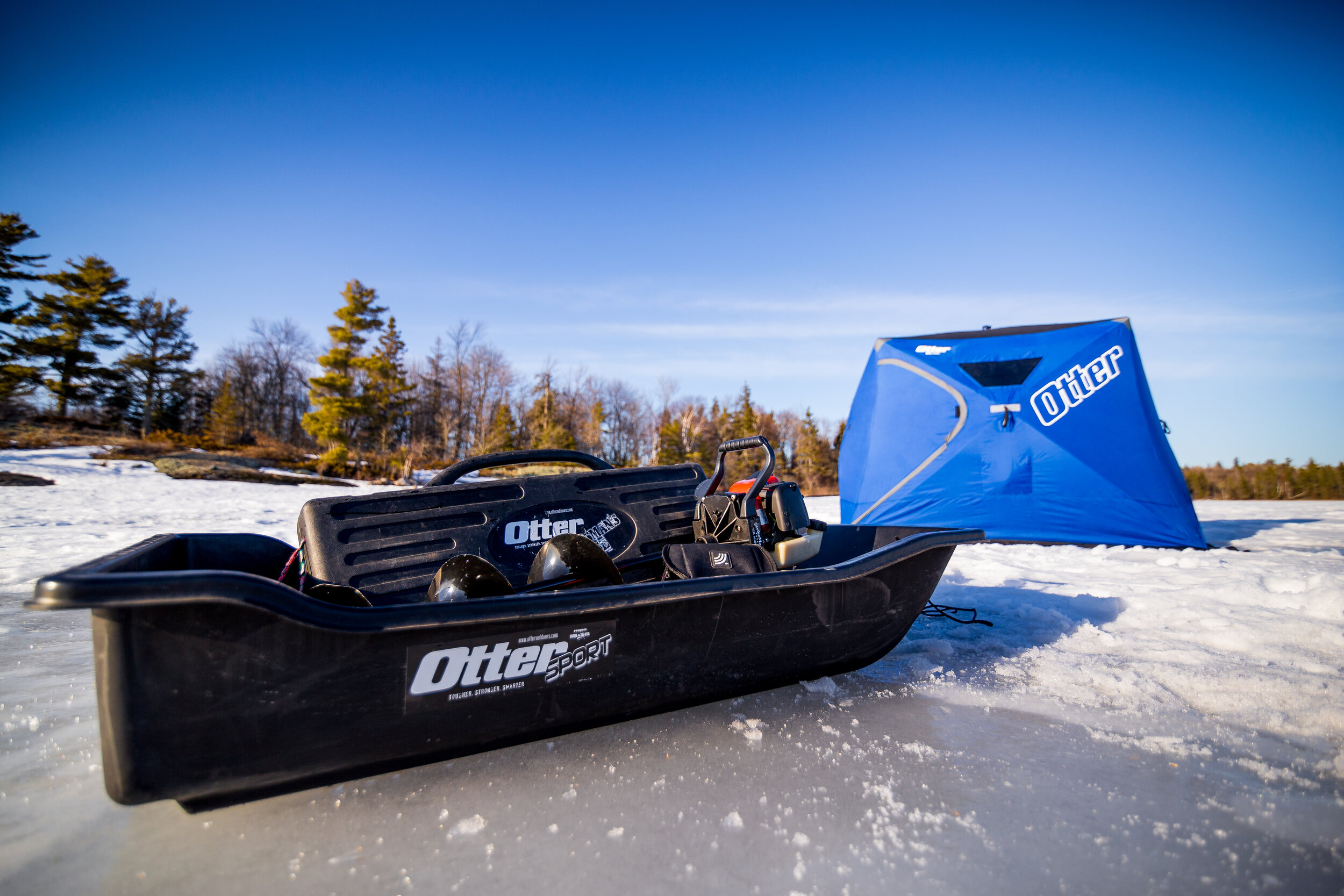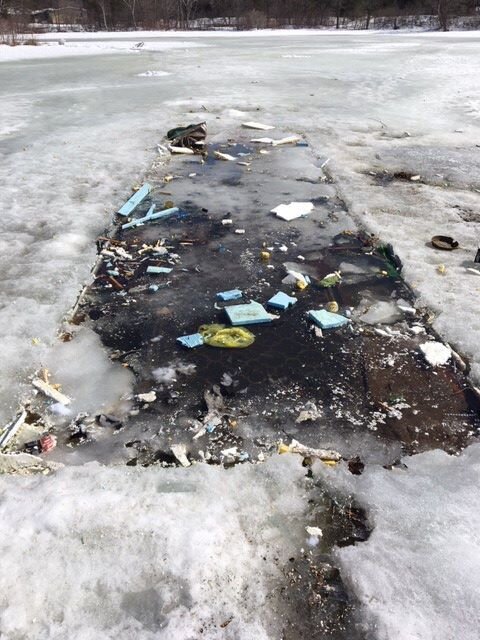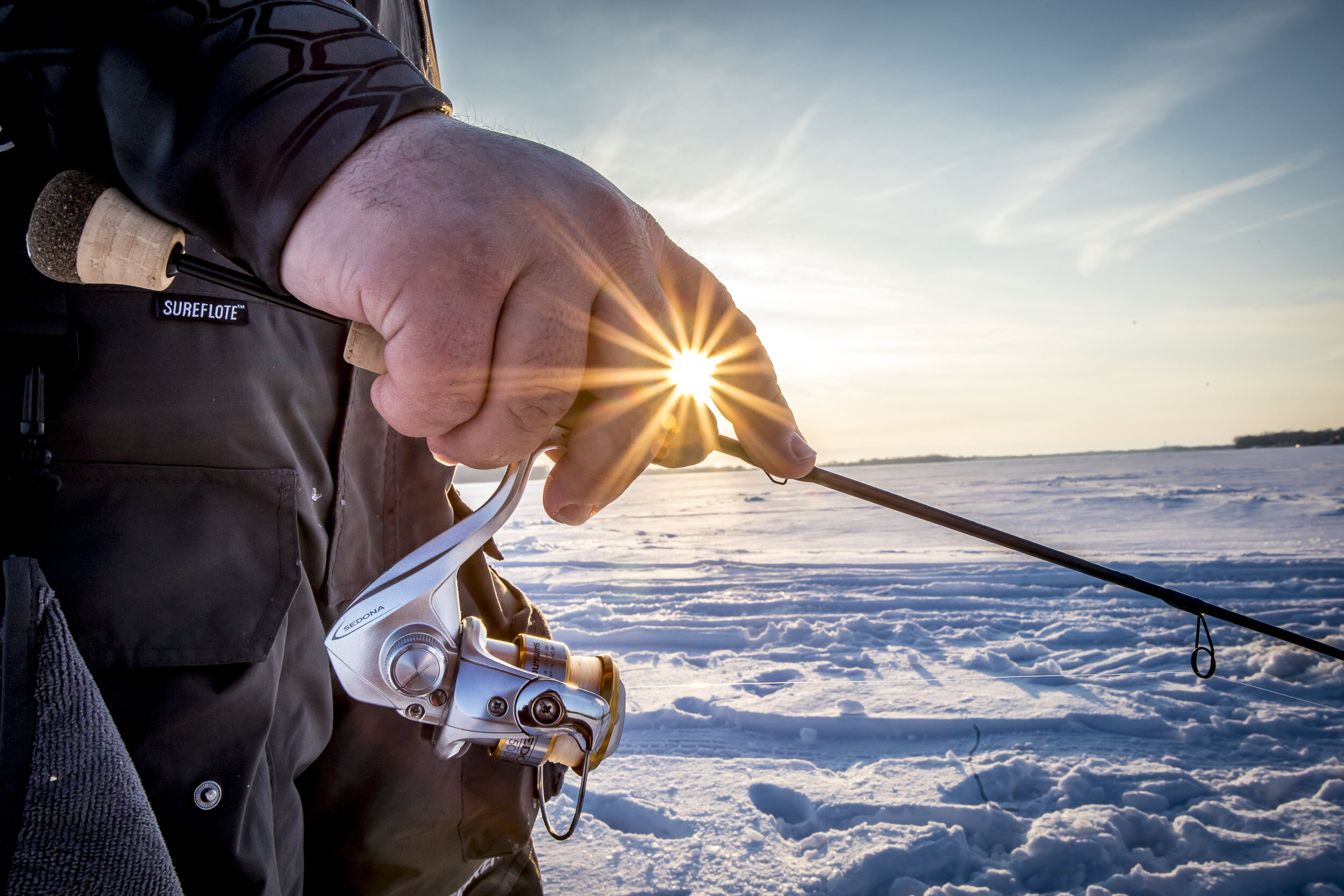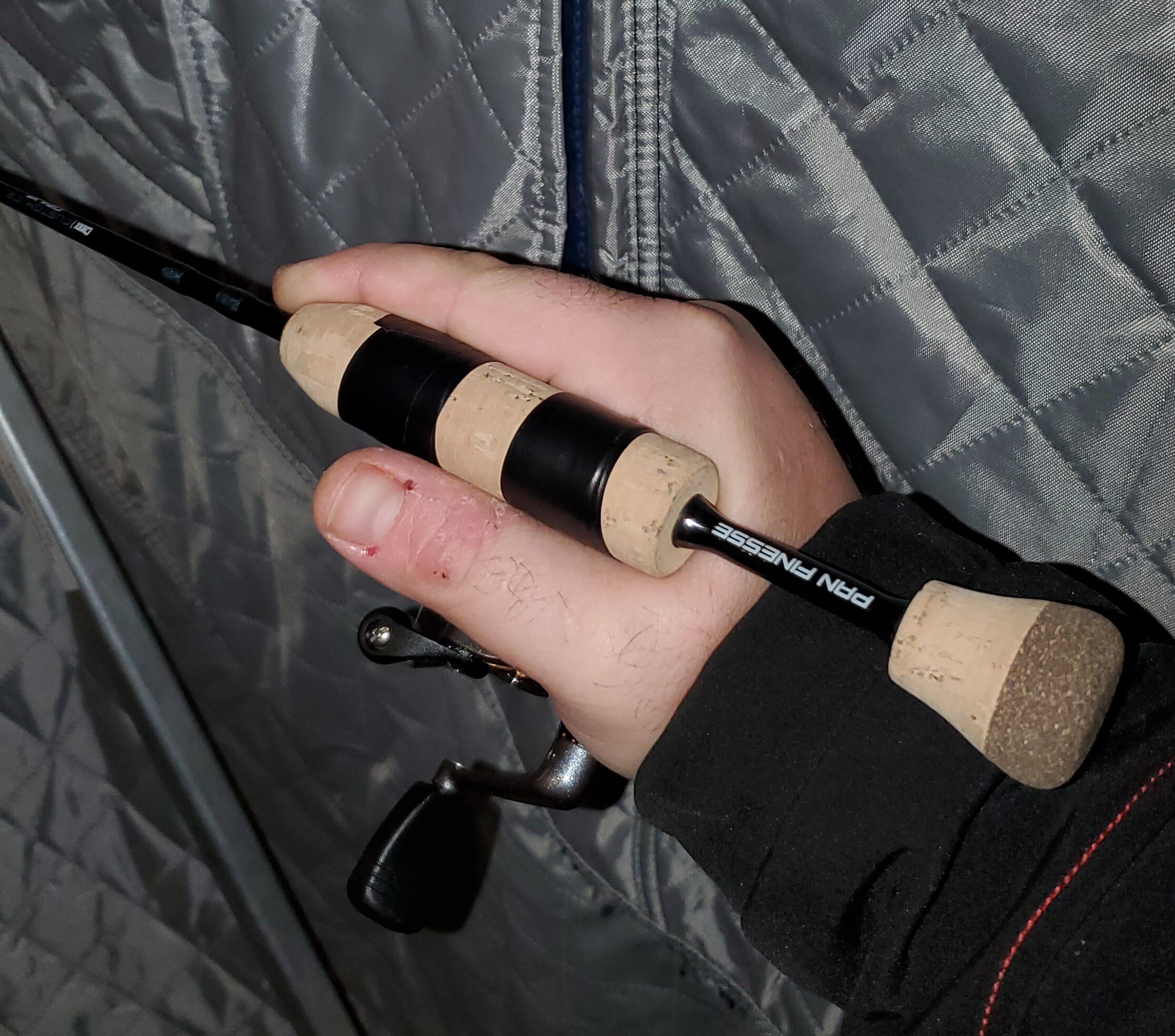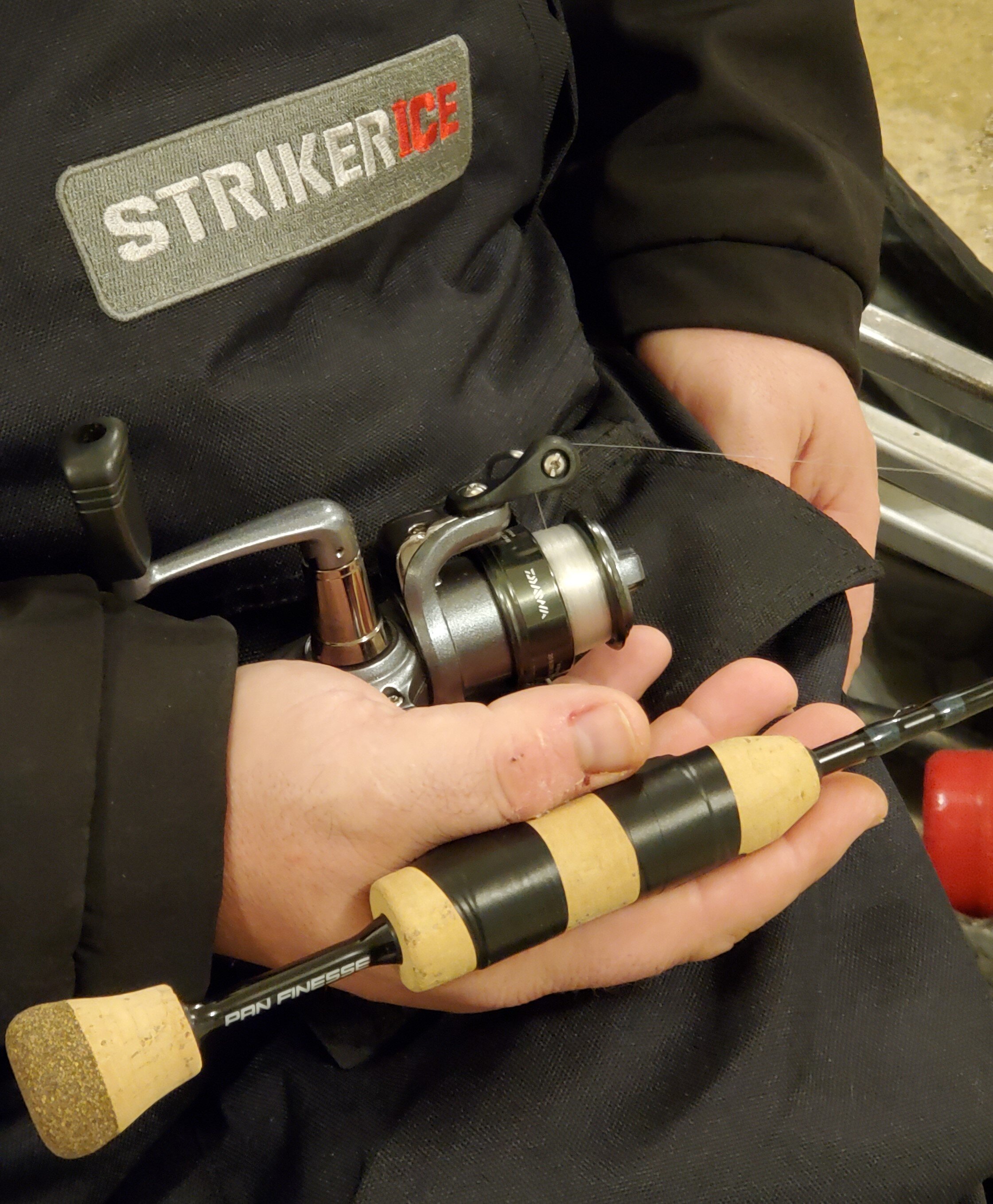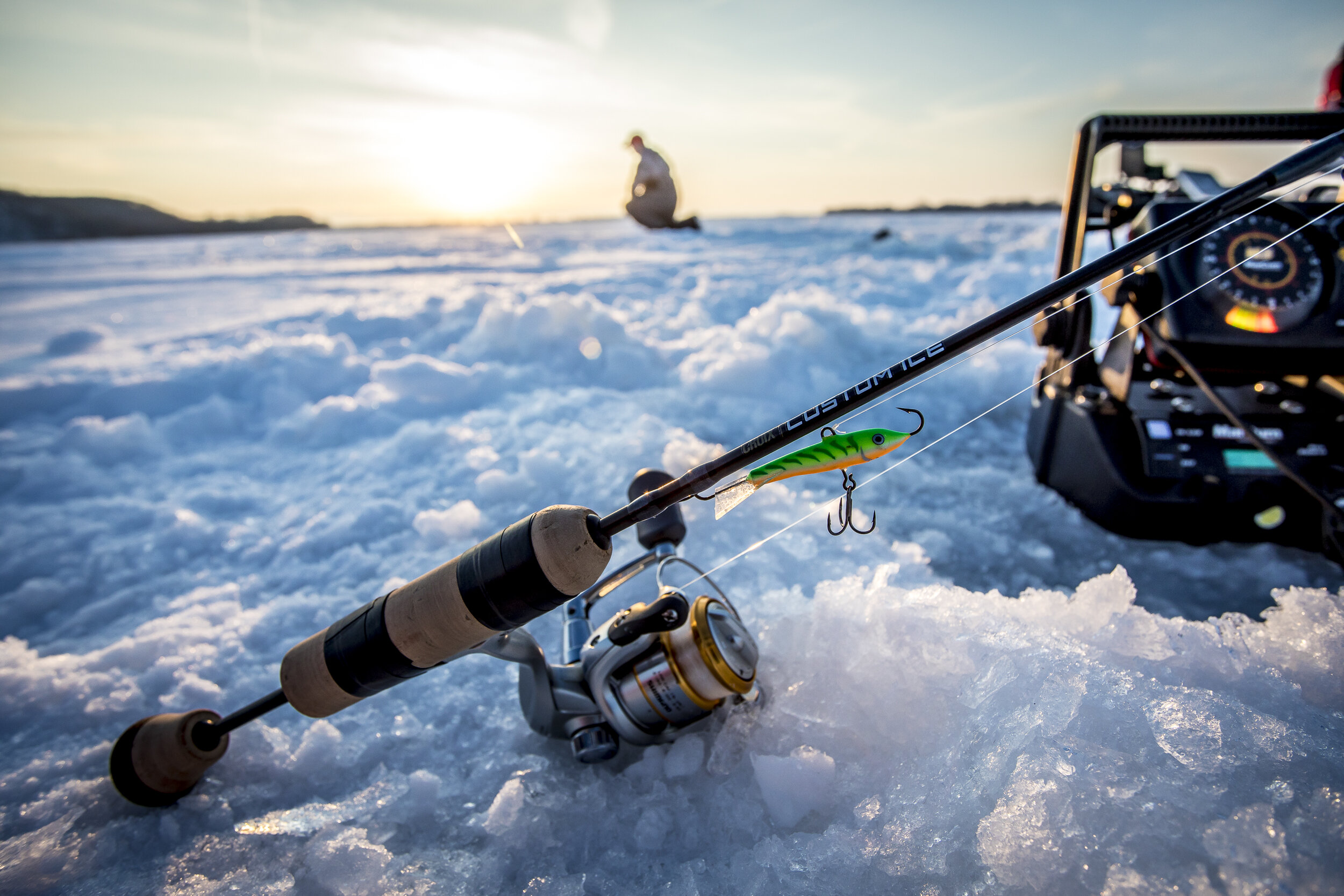Cameras are a key part of Tony Roach’s strategy for jumbo perch.
We’ve lived in a world with underwater cameras for several years now, and though technology has raced forward, the basic video feed of a swimming fish can captivate and inform nearly any angler. As cameras have become lighter, smaller, and more crisp, new advancements in sonar, live-imaging, and side-scanning have entered the fray as well. All of which makes for some tough decisions when budgeting for how best we can fool a fish.
Tony Roach is no stranger to that game, as he fishes across northern Minnesota each winter, doing his best to put clients continuously on panfish, perch, and walleyes. It should come as no surprise then that underwater cameras are a key part of his strategy, and have been since their inception. His camera approach mimics his now-famous “ice-trolling” concept of roaming select structural elements while drilling holes continuously, in an effort to both locate fish and stay on them. Few have drilled as many holes in the ice as Tony, and fewer yet have followed that up with as much underwater viewing as he has either.
The upshot is a 1-2 punch of underwater viewing that focuses on two main parts; the finding, and then catching, each of which utilizes different strong-suits of cameras vs. traditional sonar or even newer live-imaging devices.
Finding
Perhaps the most crucial portion is finding them, and cameras accomplish that goal in a variety of ways. The most obvious one, seeing a fish, shouldn’t be understated, as other means of finding fish rarely reveal speciation. Many an angler has chased suckers while thinking a walleye was the belly-to-bottom target they saw on the graph. Tony says, “We take out the camera when something isn’t adding up on sonar, and also just when we’re searching down a break.”
Certain species like perch, are curious and actually drawn to the camera. “We’re looking for the better jumbos, and even though the graph can be full, we drop cameras to stay on big fish,” says Roach. He recalls a recent trip to Winnie where perch were everywhere, but better fish were tough to stay on. Tony says, “There was a blizzard of perch down there, and we talked to other anglers that didn’t do well because they couldn’t tell the difference from small perch to good ones on their graph. We just drilled until the camera revealed more jumbos.”
Tony uses a camera for other scouting purposes too, especially for panfish. “Standing green cabbage will always be great places to look for gills, but it’s hard to determine cabbage from other less desirable lake weeds without a camera,” says Roach. These can be shallower locations too, where the sonar cone angle means a relatively small footprint on the lake bottom. Translated, that means cameras can cover more area, especially when the water is clear. “You can pick up on the structure and condition of the weeds too,” continues Roach, noting that pockets, points, and inside turns in a healthy weedbed are hard to detect in any other way.
Tools of choice for the finding game include lightweight, pocket-sized screens with equally small ducers. “It’s just easier to jump hole to hole with these models vs. the larger lunch-box style versions,” says Tony. I’d agree, in saying that the best underwater camera is one you’ll use. Smaller versions are easier to deploy, so even if the screens aren’t huge, you’re much more likely to use them when searching for schools of fish across larger areas.
Catching
Of course, catching more fish is the primary reason anyone buys an underwater cameras to begin with, but there’s a pile of ways you can extend that idea. At face value, simply seeing a fish inhale your bait gives you a distinct advantage, but this is especially true on tough bites. I recall a bite on Devil’s Lake where perch were thick, but would only eat when a live minnow was set on bottom, made to struggle against the weight of the jig that secured him. Perch would nose down, stare, and eventually pin the minnow to bottom, leaving the angler without a camera non-the-wiser to any perch’s presence.
Tony notes similar experiences with perch, “They’re the fish you love to hate – they can rise to a bait so quickly, like they’re going to crush it, and yet sometimes you can barely see or feel the bite.” Whether targeting finicky perch or other species, Roach is quick to admit that cameras make him a better angler. “Just having one down allows me to study how the fish are biting, and that can change from one hour to the next, or one area to another,” says Tony. “Sometimes we ‘sort’ by only allowing larger fish to eat the jig, and other times we’re using the camera to see what jigging technique will trigger them, it’s an invaluable tool.”
I’ve also noticed how well an underwater camera can train your jigging stroke. I heard Clam-Pro and guide Jason Durham speak about unnatural jigging motions by saying, “you’d look at a hamburger suspiciously if it suddenly jumped to the ceiling too.” I think underwater viewing can certainly prevent and inform that, as any new lure I test comes under close visual scrutiny with the camera. It’s helped unlock key twitches, stops, and swings to popular lures that have always done well for me, making them even better when a fish comes into frame.
Here’s where you can look towards a larger screen camera model, whether lure-training or trying to trick a bluegill. Camera screen size is really the premium when it comes to stationary viewing, and new HD models are great for the wheelhouse too. For select units, HDMI cables can transfer a true-HD signal to TV units in the house, such that picture quality is preserved instead of stretched and blown out when taking it to the big screen. All of which could be argued is more entertainment than educational, but we’ve all grown tired of pixelated views of either photos or video, such that what you get from the experience can be limited.
Whatever your model of choice, I don’t see underwater cameras going away anytime soon. They provide the most cost effective way to get a fish’s-eye view of the underwater world, and capitalize on images that only the human eye can interpret. Learn to use them for both finding AND catching, and you’ll soon consider them just as important as your flasher.



